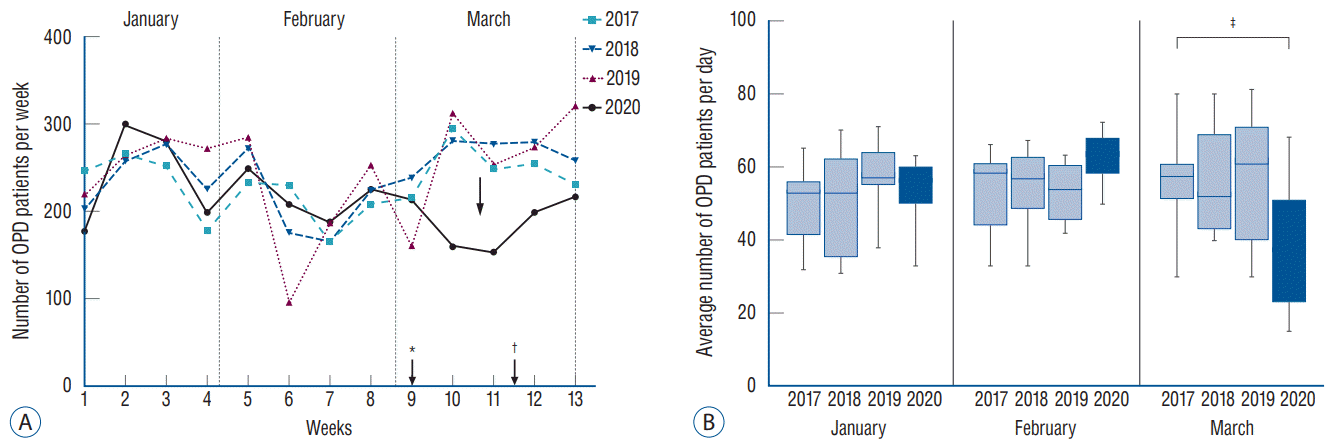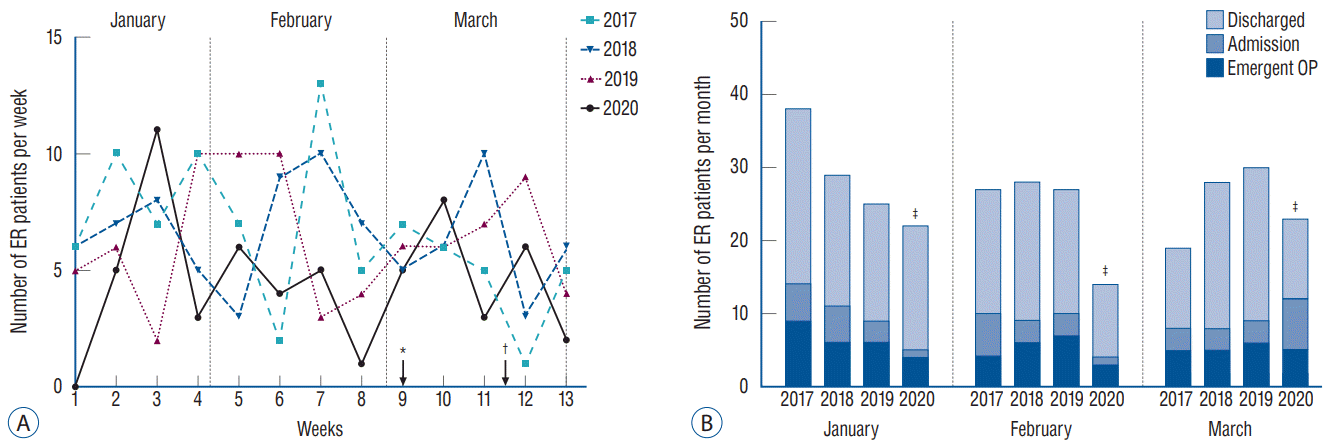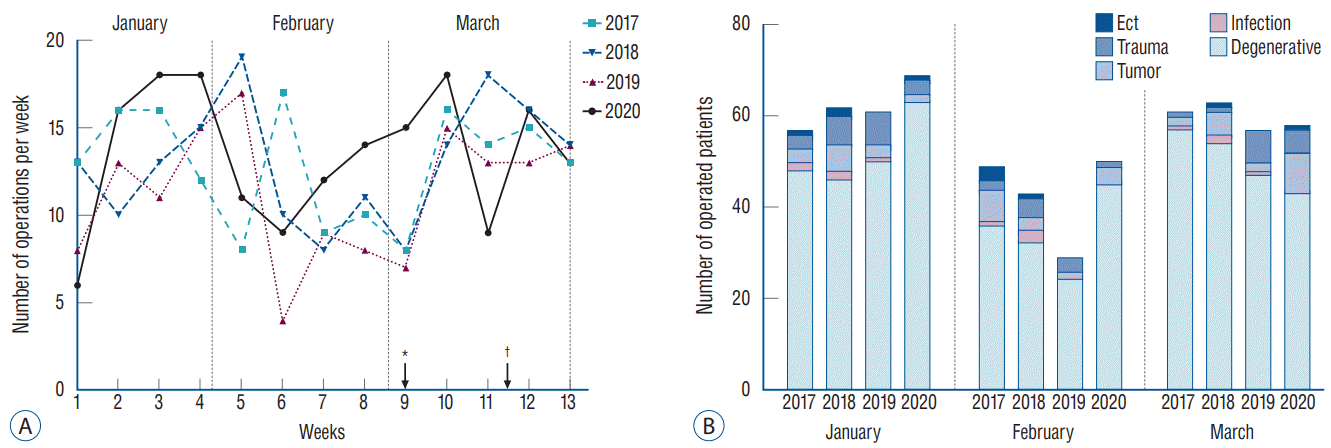INTRODUCTION
Coronavirus (CoV) is a very common pathogen, which easily affects the human respiratory system. However, this common pathogen has brought several serious outbreaks in the past. In 2002 and 2003, an outbreak of CoV induced respiratory disease of zoonotic origin occurred and resulted in a great number of casualties in Asia. This subtype of CoV infected the host’s respiratory system and led to severe acute respiratory syndrome (SARS)-naming the subtype SARS coronavirus (SARS-CoV). In 2012–2013, the appearance of another subtype of CoV showed global outbreak, which was found to be a new zoonotic origin of CoV from the Middle-East. This subtype called Middle East respiratory system coronavirus (MERS-CoV) had great impact on many countries worldwide including the Republic of Korea (R.O.K.), infecting more than 2500 patients.
In December 2019, a number of patients was diagnosed of pneumonia of an unknown etiology in Wuhan, China, and within a short time period, a new CoV was found to be the etiology of this respiratory viral disease. World health organization (WHO) named this 2019 novel CoV as COVID-19 in February 11st, 2020 [
16]. As early reports predicted its worldwide spread [
17], it has quickly become a worldwide outbreak.
In R.O.K., the first confirmed case of COVID-19 infection was reported on January 19th of 2020 [
8]. While the first confirmed patient was reported to have arrived from Wuhan, China, the disease started to spread by community transmission [
10]. And within a very short period of time, the number of confirmed patients peaked to 4212 on March 2nd, reported by the Korean Center for Disease control and Prevention (KCDC) [
11]. Although the increase of diagnoses has become steady compared to those of early March, the number is still increasing daily and has reached 9661 as of 12 AM on March 31st [
11], and 10237 on April 6th [
11]. While the early cases of COVID-19 were limited to far-east Asia, including China and R.O.K., the recent burst of outbreak is significantly affecting Europe and North America. The diagnosed cases in the U.S. has peaked up to 140904, and a total of 2405 deaths are reported by March 31st [
2]. This number has increased rapidly and by April 5th, it has reached 304826 cases and 7616 deaths [
2]. As we can see in the numbers, confirmed infection cases are growing exponentially every second. Just like many other countries worldwide, the outbreak of COVID-19 has brought great impact to R.O.K., not limited to national health issues but also regarding social, economic and political issues. And by the time of preparing this manuscript, we are still suffering from this situation trying to overcome it.
As spinal specialists, we are often not confronted with patients diagnosed with COVID-19, and as of yet, there is no clear evidence that the COVID-19 has direct impact on any form of spinal disease. However, as the worldwide outbreak of this disease has become a social phenomenon rather than a simple infectious disease, it is true that COVID-19 has already affected or will affect our practice. From a country that has faced this outbreak several weeks earlier than other nations, we have intended to evaluate how this disease has affected the number of spinal disease patients we treat in daily practice and share our results with colleagues worldwide who are likely to face the similar situation in the near future. To our knowledge this is the first report to review the impact of COVID-19 on spinal specialists’ practice.
Go to :

DISCUSSION
As we have shown in the introduction, the spread of COVID-19 has been announced to be a “pandemic” by the WHO [
16], and it has brought significant changes to every aspect of our daily life.
The symptoms of COVID-19 infections include cough, fever, fatigue, sputum, rhinorrhea, diarrhea or headache etc [
1,
4,
13-
15]. Up to date, there is no evidence that this infectious disease has any direct effects on the spine. However, as we have described in the introduction, the outbreak of COVID-19 is rather a social phenomenon than merely a rapidly spreading upper respiratory tract infection. At the early stage COVID-19 outbreak, a spine and joint specialized local private hospital in Seoul, Korea (secondary level hospital) reported a confirmed case of COVID-19 infection [
9]. A patient who was admitted at this center for a musculoskeletal disease suffered from fever and cough after surgery, and the patient was confirmed to have COVID-19 infection. Immediately after the confirmation of disease, the hospital was cohort isolated, and any further contact was forbidden by the government. The hospital was closed, isolated for 2 weeks and of course clinical practice was stopped during this period unwillingly. As we can see in this case, the infectious organism does not directly affect the spine, but confirmed infection of patients can affect the spinal specialist’s practice.
Even in hospitals and spinal clinics with no confirmed cases of COVID-19, we noticed a significant decrease of spinal patients visiting us for treatment. As we have shown in the results, the number of patients visiting the OPD of spinal clinics has significantly decreased both at a tertiary medical center and at a private spine/joint specialized hospital. The number of OPD visits dropped significantly in March, when compared with the average number of OPD visits during the same period of previous 3 years. In late February, as the Korean Government raised the national COVID-19 threat alert level to highest, ‘RED’ [
3], the decrease became statistically significant. This result suggests that the outbreak of COVID-19 has significantly affected the patient’s decision to visit hospitals via OPD. Although we do not have any survey results or any other evidence on which factors have led us to this result so far, we suppose that the fear of getting exposed to COVID-19 infection by any chance has kept the patients home rather than visiting a hospital. It has been reported that the fear against a certain phenomenon can act as a factor discouraging the patients to visit hospitals [
6]. This pattern of decrease in OPD patients was similar among different hospital levels.
Interestingly, like the change of OPD visit numbers, the number of patients visiting the ER due to spinal diseases also presented a significant decrease as shown in results. When preparing this manuscript, we hypothesized the number of OPD patients with spine related diseases could decrease due to the outbreak of COVID-19 and thought that the number of ER visits would remain the same. However, the results were not as we expected, and the number of ER visits also decreased. The general population may have advocated the government’s recommendations of social distancing, avoiding hospital visits unless inevitable and resulting in a decreased OPD and ER visits.
Despite the significant decrease in OPD and ER visits, the average number of both elective and emergency surgeries during COVID-19 outbreak was maintained compared to that of the same period in 2017–2019. This is an important point of our results that the number of elective and emergency operations during COVID-19 outbreak was not lower compared to the previous 3 consecutive years, which suggests that patients with severe pain, neurologic deficits or severe trauma requiring surgical intervention still visited the hospital regardless of the COVID-19 outbreak, and underwent surgery. We assume that this could be a possible reason that has led to the maintained number of elective and emergency operations while hospital visits via OPD and ER both decreased. By scrutinizing our results, we noticed that the COVID-19 outbreak has brought significant changes into our clinical practice. It led to a significant decrease in number of patients we meet both at OPD and ER, however did not affect the number of surgeries we perform.
Three months have passed since the outbreak of COVID-19 and we still do not have an evidence based, scientifically confirmed protocol for COVID-19 prevention at a health care providing center level. However, codes of conducts from the government and other scientific committees are being introduced. The KCDC recommends three instructions for health care providers, and six behavioral recommendations for the general population [
5,
12]. The three instructions that health care providers regardless of their medical specialty should follow are presented on
Table 3. These instructions are, of course, not only for those dealing with infectious disease, but also the same for general physicians, including spinal specialists. And all spine specialists in our center are also following them. The six behavioral recommendations for general population are also shown on
Table 3.
Table 3.
Recommendations for health care providers and general population under COVID-19 outbreak, by the Korean Center for Disease control and Prevention
|
Recommendations |
|
For health care providers |
|
|
• |
Wearing a mask or other equivalent protection devices is mandatory while caring patients with respiratory diseases. |
|
• |
Check travelling histories of every single patients, especially including any possibility of visiting epidemic regions of COVID-19 overseas and domestic. |
|
• |
If any possibility of COVID-19 infection is suspected, immediately report it to the health center of jurisdiction. |
|
For general population |
|
• |
Wash your hand frequently and thoroughly using soap and running water for at least 30 seconds. If you cannot access to soap and running water, using alcohol-based hand sanitizers can be an alternative. |
|
• |
Please remember the coughing manners in case you have any respiratory symptoms. Wear a mask. If you do not have a mask, do not forget to cover your mouth and nose with your arm sleeves when coughing. |
|
• |
Do not touch your eyes, nose, mouth or any other parts of your face with your hands. |
|
• |
Put on a mask when visiting medical health facilities. |
|
• |
Avoid crowded places. |
|
• |
Avoid any contact with others whom have respiratory symptoms or fever. |

During the investigation period, we had a single case of suspected COVID-19 patient presenting with fever, who was fortunately confirmed to be negative by the diagnostic test. The patient was admitted for an elective lumbar spinal fusion surgery and presented with fever of unknown origin on the operation day, after arriving at the operating theater. The patient did not have any confirmed evidence of infection nor any traveling history to dangerous regions. Nevertheless, following strict regulations of the hospital regarding how to deal with fever patients under the recent circumstances, the elective surgery was immediately cancelled and the patient was referred for COVID-19 screening tests. Only after final confirmation of negative results, the patient was allowed to undergo the surgery which was 2 days after the initially scheduled date. The Korean association of anesthesiologists has announced a recommendation for institutions or hospitals regarding peri-operative patients suspected of COVID-19 [
7], and this guideline helped us to promptly respond to this unexpected event. This guideline has detailed instructions for health care providers dealing with peri-operative patients, starting from transport of patients, managements of the operating theater to the anesthesia process [
7].
Our report has certain limitations. As this is an early preliminary report from a single regional university hospital center, the major weakness of this study is the small number of cohort and it is hard to say that our data represents the national data. As we are still encountering the outbreak situation, conducting a larger study involving multiple centers was challenging and the data is collected from a single institution of each level of hospitals. To minimize this weakpoint, we reviewed the data from two different level hospitals. Nevertheless, we believe that our data provides us with a clue on what happens under infectious disease outbreaks. After the outbreak subsides and the disease is under control, further larger studies are guaranteed, and additional data from the public national health services may add strength to such studies.
Another limitation is the lack of evidence based information regarding the significant reasons as to why patients avoided visits to the OPD spinal clinic, and it is a conjecture in this report that the fear for COVID-19 may have been the cause. Under current circumstances, we were unable to get surveys from patients or clinical health care providers. This as well can be of object for future studies. Furthermore, our study fails to reflect the complex epidemiologic factors which may affect the number of OPD or ER visits under these situations. For example, regional factors, hospital factors, physician factors, patient factors (pain scores, neurologic status or detailed disease severity), socioeconomic factors, etc. should be considered in further studies. Under these limited circumstances, we believe that it is reasonable to assume that the significant change in patient visits is strongly related to the fear of COVID-19 outbreak and the government’s recommendations to refrain from outside activities. Despite these limitations, as a first narrative report on this issue, this article will help us understand what happens to our practice and be prepared for the change.
To our knowledge this is the very first clinical article to report the impact of COVID-19 outbreak on change of spinal specialists’ practice, and we have confidence that this report will be informative to spinal specialists, pain physicians and clinical neurology/neurosurgery practitioners. As the R.O.K. has met this outbreak several weeks earlier than other nations, we hope this information could help our colleague spinal specialists worldwide and give them a chance to get prepared to the possible impact on their practice, which will come in the near future. We also provided the recommended instructions for both health care providers and general population we are following in R.O.K., and hope this information helps readers.
Go to :








 PDF
PDF Citation
Citation Print
Print



 XML Download
XML Download